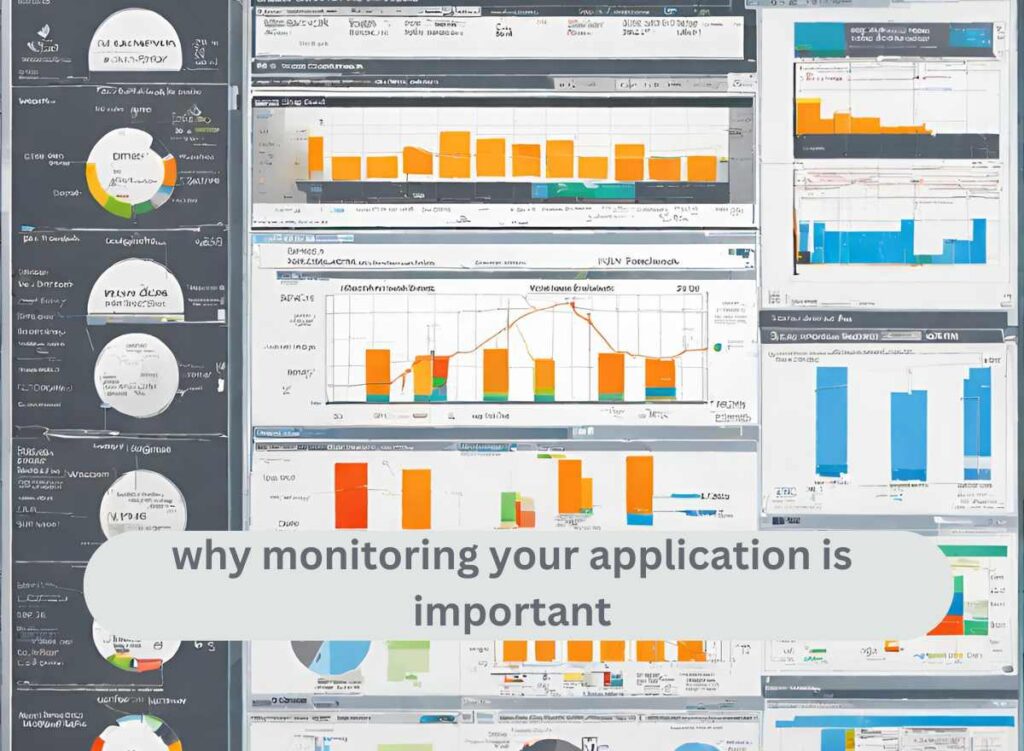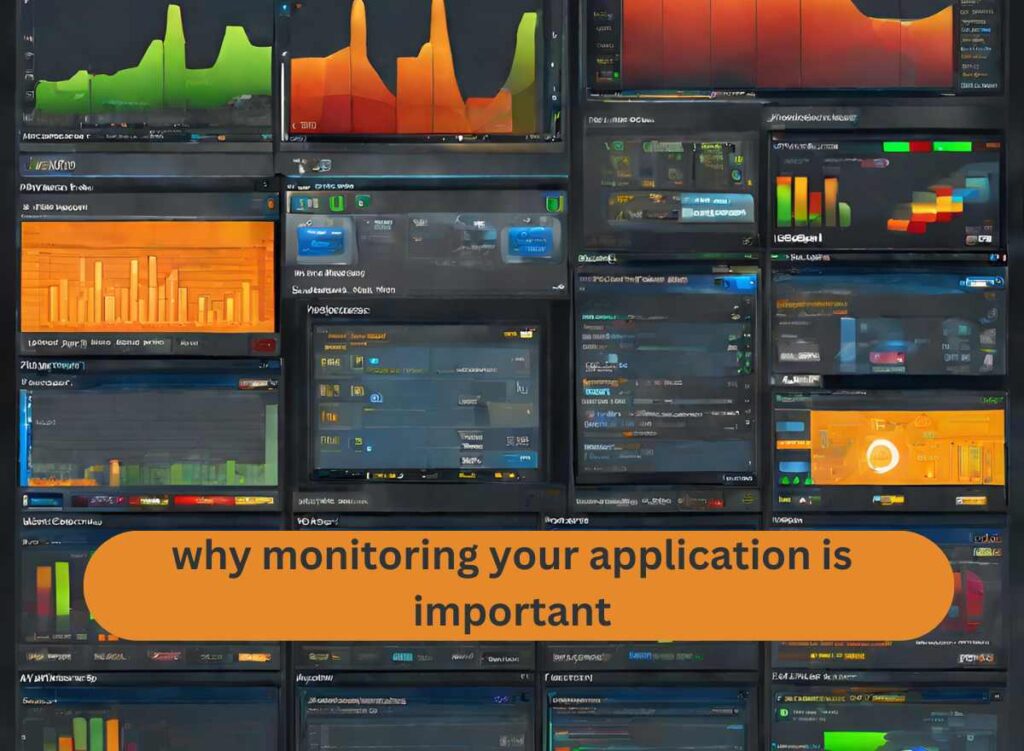Performance Matters: The Essence of Why Monitoring Your Application is Important

In the dynamic realm of contemporary business, where organizations heavily rely on a multitude of software applications for seamless operations, ensuring the optimal performance of these applications is more than just a technical necessity—it’s a strategic imperative.
As the digital landscape continues to evolve, businesses find themselves sailing through the intricate waters of technology, where the need for robust Application Performance Monitoring (APM) emerges as a beacon guiding them towards sustained success and growth. Here is why monitoring your application is important.
The Essence of Application Performance Monitoring:
Imagine your business as a ship navigating the vast digital seas. Just like a captain relies on instruments to gauge the health of the vessel and weather conditions, organizations require APM as their navigational tool.
Application Performance Monitoring is not merely about tracking the availability of apps; it is a proactive strategy designed to detect and resolve issues before they cast a shadow on productivity.
The goal is clear: ensure continued uptime and sustainable growth by safeguarding the performance of critical applications.
Why Monitoring Your Application is Important:

- Issue Detection and Resolution:
- APM tools function as vigilant sentinels, swiftly identifying issues within applications—be it errors, slow response times, or potential downtime.
- Rapid issue resolution becomes the linchpin for preventing business disruption and safeguarding revenue streams.
- Improved Performance:
- The intricate metrics analyzed by APM, such as response time and throughput, serve as a compass guiding businesses in making data-driven decisions.
- Organizations gain the ability to pinpoint areas where key software may be underperforming, leading to a continuous cycle of optimization, upgrades, or strategic shifts.
- Enhanced User Experience:
- By monitoring user behavior, APM provides invaluable insights into how employees interact with everyday applications.
- This understanding allows businesses to identify and address common pain points, provide targeted training, and eliminate underperforming software, contributing to an overall improved user experience.
- Robust Security:
- APM is not just about performance; it plays a pivotal role in identifying security vulnerabilities and addressing potential threats.
- Through monitoring for unusual activities and unauthorized access attempts, APM becomes a shield against potential breaches, ensuring the security of SaaS applications.
Choosing the Right Application Monitoring Tools:
- Tracking and Diagnosis:
- A robust APM tool should function as a skilled diagnostician, swiftly identifying and diagnosing issues impacting performance, from slow response times to resource utilization problems.
- Performance alerts become the lifeline for timely responses, ensuring the health of your applications.
- Root Cause Analysis:
- Beyond immediate issue resolution, an effective APM tool provides a detailed root cause analysis, empowering organizations to address fundamental causes and prevent recurrence.
- This analytical depth adds a layer of strategic foresight to the APM process.
- Performance Metrics and Reporting:
- APM tools should present organizations with easy-to-digest data visualizations and actionable reports.
- Benchmark performance metrics, insights into current operations, and predictive analytics contribute to informed decision-making and strategic planning.
Application Monitoring Best Practices:

- Define Your Objectives:
- The first step before implementing APM is to define clear goals and performance metrics.
- Organizations must set expectations for application performance that align with broader organizational objectives.
- Select the Right APM Tool:
- Choosing an APM tool aligned with organizational needs is crucial.
- Look for solutions offering real-time monitoring, root cause analysis, and actionable reports to meet the unique requirements of your business.
- Stay Alert:
- APM is not a set-and-forget strategy. Regularly check performance updates and enable alerts for proactive issue resolution.
- The effectiveness of APM is significantly enhanced when organizations are responsive to identified problems.
- Act on Data:
- The data generated by APM becomes a powerful tool for informed business decisions.
- Regularly reviewing reports not only resolves immediate issues but also contributes to ongoing improvements and optimizations.
- Continuously Optimize:
- APM facilitates continuous optimization by allowing organizations to focus on patterns and anomalies in application behavior.
- Eliminating recurring issues becomes a strategic priority, ensuring enhanced app performance and a seamless user experience.
Struggling with Application Performance Monitoring?
As your business scales, the complexity of your technology stack grows in tandem. Monitoring each application individually can be time-consuming and labor-intensive.
However, neglecting effective application monitoring can quickly lead to critical disruptions in essential business operations.
In such a scenario, the beacon of Electric beckons you. Electric offers a solution to simplify your application performance monitoring, ensuring the seamless operation of your technology ecosystem.
The full potential of APM is unleashed, propelling your business into the realm of unparalleled efficiency and reliability.
FAQs about Why Monitoring Your Application is Important
Q1: What is Application Performance Monitoring (APM)?
APM is a proactive strategy and set of tools designed to track, analyze, and optimize the performance of software applications, ensuring they operate seamlessly and meet user expectations.
Q2: Why is APM important for businesses?
APM is crucial as it helps businesses detect and resolve issues within applications, improve performance, enhance user experience, and fortify security, ultimately contributing to operational efficiency and sustained growth.
Q3: What issues can APM detect?
APM can detect a range of issues, including errors, slow response times, and potential downtime within applications, allowing for quick resolution and prevention of disruptions.
Q4: How does APM contribute to improved user experience?
APM monitors user behavior, identifies pain points, and eliminates underperforming software, leading to an overall enhanced user experience by addressing common issues.
Q5: What is the role of APM in security?
APM plays a pivotal role in identifying security vulnerabilities and addressing potential threats by monitoring for unusual activities and unauthorized access attempts, ensuring the security of applications.
Q6: What are the key features to look for in APM tools?
APM tools should offer tracking and diagnosis capabilities, root cause analysis, real-time monitoring, and actionable reports to provide comprehensive insights into application performance.
Q7: How can organizations optimize their APM strategy?
Organizations can optimize their APM strategy by defining clear objectives, selecting the right APM tool, staying alert with regular performance checks, acting on data insights, and continuously optimizing for improved performance.
Q8: Why is real-time monitoring important in APM?
Real-time monitoring allows organizations to promptly detect performance anomalies, enabling swift action to resolve issues, optimize performance, and allocate resources efficiently based on current metrics.
Q9: How does APM contribute to cost control?
APM provides insights into resource utilization, enabling organizations to optimize resource allocation, minimize downtime, and prevent revenue loss, thereby contributing to cost control.
Q10: Can APM be beneficial for small businesses?
Yes, APM is beneficial for businesses of all sizes. It helps small businesses detect issues early, enhance user experience, and ensure the reliability and efficiency of their applications.
Conclusion:
In the digital era, where businesses navigate the complex waters of technological advancement, Application Performance Monitoring emerges as the compass guiding organizations toward success.
It is not merely a technical tool but a strategic asset that ensures the continued uptime, improved performance, enhanced user experience, and robust security of critical applications.
By adhering to best practices and choosing the right tools, businesses can transform APM from a reactive measure to a proactive strategy, paving the way for sustained growth and excellence in the digital landscape.
As you embark on this journey, remember that Electric stands ready to assist, offering a simplified path to mastering the art of Application Performance Monitoring.








